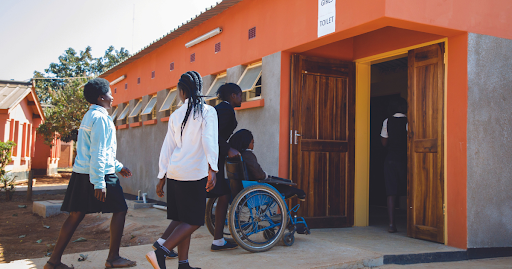INCLUSIVE DEVELOPMENT
Context
Water insecurity - including lack of access to drinking water, sanitation, and hygiene products and services - disproportionately impacts those who are poor and who face social, political, or legal discrimination. However, investments in equitable water security, water resource allocation, and access to basic services for marginalized individuals have the potential to mitigate the impact of many other inequalities, such as in access to education, health care, sufficient nutritious food, and employment.
Women and girls are particularly affected because, in addition to facing stigma and discrimination based on gender, they often are also members of other marginalized groups.

Photo credit: Water and Development Alliance/Zambia.
USAID’s Approach
To achieve equitable access to water, sanitation and hygiene services, and equitable water resources management across underserved, underrepresented, and marginalized groups and those in vulnerable situations, USAID:
- Ensures that program and activity design reflects and responds to specific contexts, experiences, traditional knowledge, and barriers to equity and inclusive outcomes, identified through consultation with people from marginalized communities.
- Uses social and inclusive development analytical tools, including mandatory gender analyses, and incorporates findings across activity design, implementation, and monitoring.
- Disaggregates program data to better understand progress, opportunities, and lessons learned in reaching those who are hardest to reach.
- Partners with underserved and marginalized people and communities and with civil society organizations led by and for them and people in vulnerable situations, which includes:
- Seeking free, prior, and informed consent;
- Supporting organizational and professional development to accomplish locally defined goals;
- Facilitating safe, accessible, and meaningful participation of underserved and marginalized people and communities in activity and policy design, implementation, monitoring, and research;
- Honoring local and traditional knowledge and systems;
- Using inclusive and accessible communications tools and social and behavior change approaches.
Read more under “Principle 2” in the U.S. Global Water Strategy.
Related Policies and Strategies
- USAID Disability Policy
- USAID Policy on Standards for Accessibility for the Disabled in USAID-Financed Construction
- USAID LGBT Vision for Action
- USAID Youth in Development Policy
- U.S. Government Advancing Protection and Care for Children in Adversity Strategy
- USAID Policy on Promoting the Rights of Indigenous Peoples
- Executive Order on Advancing Racial Equity and Support for Underserved Communities through the Federal Government
- Presidential Memorandum on Advancing the Human Rights of LGBTQI+ Persons Around the World
Related Resources
- Dimby and Doda Built a Latrine | USAID ACCESS Health Program
- Bringing New Voices into the WASH Sector: USAID scholarship expands diversity, equity, and inclusion at water sector conferences
- Sanitation Services Designed with Inclusivity in Mind
- Menstrual Health and Hygiene Technical Brief
- Gender Equality and Female Empowerment in WASH Technical Brief
- Closing the Equity Gap: Water and Sanitation Data Can Help Us to Ensure No One is Left Behind
- Inclusive Development in India: USAID Partners with Local Transgender Community on WASH
- H2O Maghreb Empowers Moroccan Women to Play New Roles in Sustainable Water
- When Women Manage Water
- EquityTool Wealth Assessment Improves Targeting and Outreach
- Rapid Review of Disability and Older Age Inclusion in Humanitarian WASH Interventions Interventions
- Districts Adopt USHA School Toilets As Standard Model


